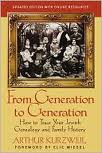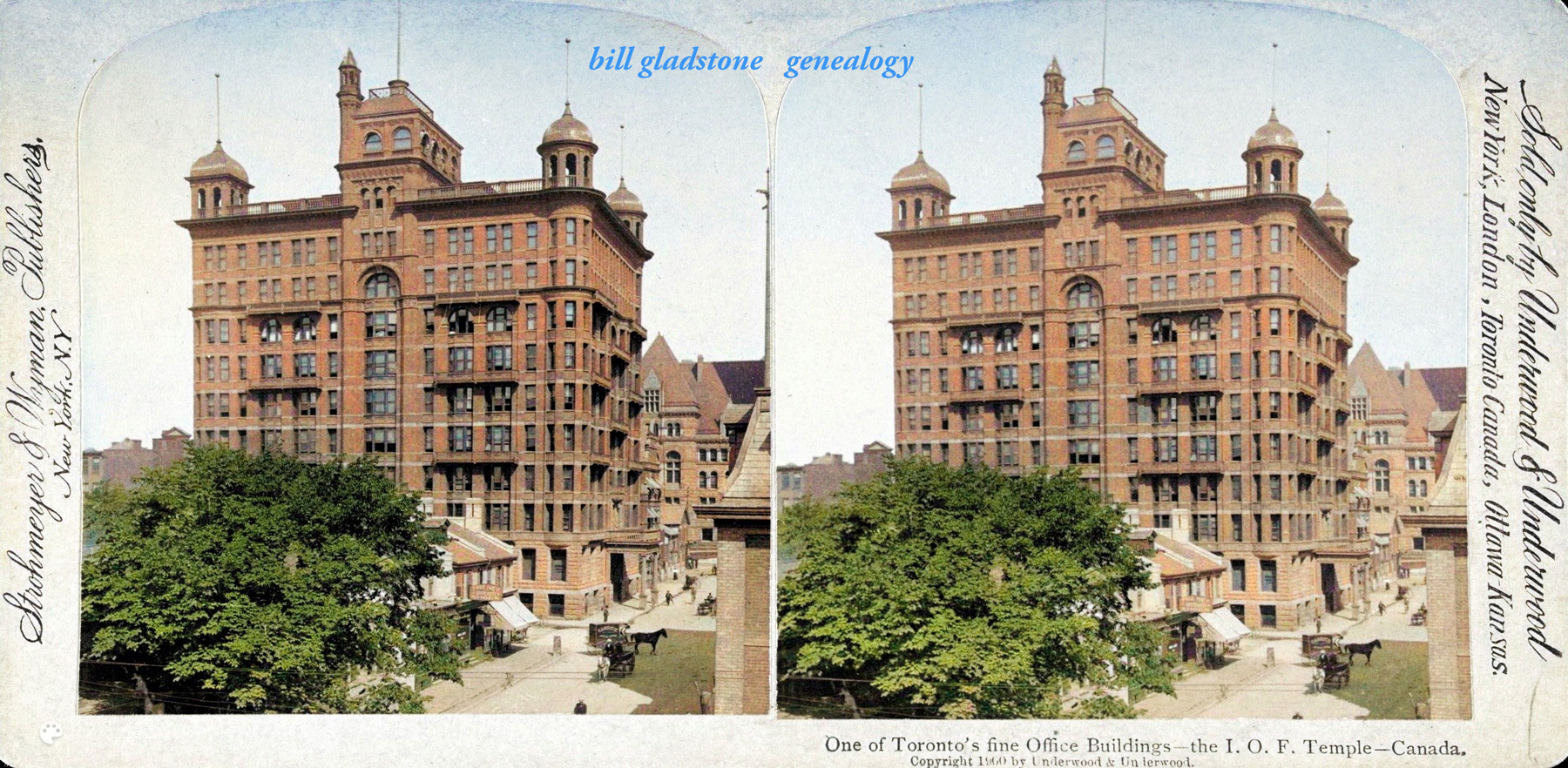 It has been almost 25 years since novice Jewish genealogist Arthur Kurzweil wandered into the Jewish Division of the New York Public Library to search the card catalog for references to the Galician shtetl of Dobromil, where his father and numerous ancestors had lived. Kurzweil had heard enough family legends and stories about the town over his lifetime that Dobromil had attained vibrant and romantic substance in his imagination. But he knew that few outsiders had ever heard of the place and did not expect to find anything in the library catalog.
It has been almost 25 years since novice Jewish genealogist Arthur Kurzweil wandered into the Jewish Division of the New York Public Library to search the card catalog for references to the Galician shtetl of Dobromil, where his father and numerous ancestors had lived. Kurzweil had heard enough family legends and stories about the town over his lifetime that Dobromil had attained vibrant and romantic substance in his imagination. But he knew that few outsiders had ever heard of the place and did not expect to find anything in the library catalog.
As he recalled in his 1980 book, From Generation to Generation: How to Trace Your Jewish Genealogy and Family History — a revised edition of which has recently been issued by HarperCollins — Kurzweil was astonished to find an index card referring to the town’s memorial book. He was even more astonished after a librarian retrieved the volume and he began flipping through its more than 500 pages.
“Turning to the first page, a full-page photograph, I read the caption: Main Street in Dobromil. There is no way for me to know how many minutes I sat staring at the picture. The photograph showed an unpaved road, several small buildings with slanted roofs, and a few people on the street. No one will believe that the picture was familiar to me, but in fact I had imagined it just this way.”
Upon discovering a group picture in the book that included his great-grandfather, Kurzweil could not contain his excitement, and shared his discovery with a librarian who “took the matter quite casually.” Even at this early stage, Kurzweil was discerning one of the genealogist’s cardinal rules: nothing is potentially more fascinating to a person than his or her own family history, nor potentially more boring to anyone else. (The exception is when a gifted storyteller like Kurzweil is doing the telling.)
Kurzweil’s next genealogical adventure involved phoning Philip Frucht, one of the members of the Dobromiler Society of New York, which had put the book together. But Frucht claimed that he had never known Kurzweil’s grandfather.
“Again I repeated my name, but it did not help. It was then that an idea struck me. Though I knew my grandfather to be named Julius, his name in Yiddish — and therefore in Dobromil — was Yudl. I also knew that though my grandfather was a roofer in Brooklyn, he was a tinsmith in Dobromil. So I asked Mr. Frucht, ‘Did you know Yudl the tinsmith?’
“Frucht’s voice perked up. ‘Who are you to Yudl?’ he demanded.
“‘I’m his grandson,’ I said.
‘The next thing I knew, Frucht was shouting into the next room to his wife, telling her that he was speaking to Yudl’s grandson. He sounded as excited as I was.”
Most family tree researchers have experienced such moments when a new genealogical discovery or connection sends chills down the spine. No writer to my knowledge has captured this particular thrill so effectively as Arthur Kurzweil. His ability to chronicle each step on the path to discovery, along with his relevant thoughts and feelings at the time, seemingly touches a universal chord among Jewish family history researchers.
A surprise bestseller, the first edition of From Generation to Generation was not the first modern book dealing in general with the subject of Jewish genealogy. (That honor belongs to the 1977 book “Finding Our Fathers,” by Dan Rottenberg). But reviewers hailed Kurzweil’s contribution as the best. Today it modestly stands as a quasi-classic of the genre and the book most recommended for neophytes.
Does the updated version offer the same encyclopedic background of the subject and summarize all the advances that have occurred since the first edition, with the same delightful human touch? This reviewer reports that the warmth is still present as before. However, in most of the new sections, the author comes across as a sort of Jewish Rip Van Winkle, recently awakened after a long shluff and not completely able to integrate or even grasp all the changes that have overtaken his world.
For instance, Kurzweil might have acknowledged that there have been changes in the availability of Jewish records in Belarus, Lithuania, the former East Germany and many other places brought on by the collapse of communism and the Berlin Wall. He seems equally unaware of the annual seminars that attract hundreds of researchers to locations like Los Angeles, Salt Lake City, New York, Toronto and Jerusalem.
Likewise, Kurzweil gives little glory to Alexander Beider for his remarkable 1992 opus, Dictionary of Jewish Surnames from The Russian Empire, which has been hailed as the most comprehensive and scholarly contribution to the field of Jewish onomastics in the last century. As well, he lists Miriam Weiner merely as one of numerous professional genealogists, though she is by far the most accomplished. How many others have hacked their way into the jungle of the post-Soviet regime — Moldova, Ukraine, Belarus — and emerged with 19th-century Jewish records in hand? An entrepreneurial trailblazer, she should have been given more attention.
However, the new edition of From Generation to Generation is still a great beginner’s guide. No other book takes the novice’s hand and leads him or her so carefully and patiently through the intricacies of Jewish family history research. ♦
© 1994
FAMILY TREE AUTHOR TO LECTURE
A generation after his best-selling book From Generation to Generation was first published, legendary American writer and genealogist Arthur Kurzweil is coming to Toronto to give a lecture on “Jewish Genealogy As A Spiritual Pilgrimage: Why and How to Trace Your Jewish Family Tree.”
Kurzweil, whose visit is scheduled for Sept. 17th, is considered a pioneer of the modern Jewish genealogy movement, having written one of two early books on the subject. The first edition of From Generation to Generation appeared in 1980 and has since gone into several printings. Sales of about 60,000 copies have given it the status of a towering best-seller in the world of Jewish publishing.
“It’s a source of great satisfaction and pride to me that I was involved at the beginning in helping to get this thing [the Jewish genealogy movement] started,” he said in a telephone interview from New Jersey.
He called the internet “the major tool for Jewish genealogy” and recalled that it didn’t exist when he started doing family tree research in the 1970s, and that most Jewish research facilities back then weren’t geared for family-tree researchers.
A former director of the New York-based research institute YIVO “used to shake his finger at me and say, ‘You’re the one causing all the trouble,’ Kurzweil remembered. “I was publicizing YIVO as a source of information and they weren’t ready for the army of genealogists that would come to use their collections. They were more prepared to help professional historians and graduate students in Jewish history. They weren’t prepared to handle the amateur Jewish family historian who didn’t know what questions to ask, what collections were available, or how to use them.”
A central theme of Kurzweil’s upcoming talk is that doing genealogical research can lead to a greater spiritual connection. “There’s an immigrant historian — Hansen, I think his name is — who is famous for saying, ‘What the children of immigrants want to forget, the grandchildren of immigrants want to remember.’
“The grandchildren of Jewish immigrants to North America are part of that phenomenon. When our grandparents and great-grandparents came to this country, they were by and large cut off from their Jewish lives and their Jewish past. Their assimilation was rapid and quite effective, but it left the grandchildren and great-grandchildren of these people disconnected from a spiritual heritage that sustained us and nourished us for centuries.”
For Kurzweil, genealogy was the route that led him to greater knowledge of his ancestors and then a desire for greater knowledge of his Jewish faith.
Publisher of a spiritually-themed magazine called Parabola, he has been the long-time driver for Rabbi Adin Steinsaltz when the esteemed Israel-based talmudist comes to New York. Kurzweil’s book, On the Road with Rabbi Adin Steinsaltz, was to be published this month by Jossey-Bass. (Another manuscript, Kabalah for Dummies, is due out this fall in the popular “dummies” series.)
A frequent lecturer, Kurzweil also performs a 90-minute one-man show titled Searching for God in A Magic Shop. “I had a realization about magic tricks and Judaism, and I can say it succinctly,” he said. “The reason that magicians are able to fool the audience is that the audience doesn’t see everything. If the audience saw everything, they’d understand what is going on. The same notion exists in Jewish theology. The reason that people are often confused about life is that we don’t see everything.
“There’s an expression from the Talmud, ‘Gum zu le-tovah,’ this too is for the good. It’s a euphemism that everything is for the best. We have to cultivate that attitude even though it often doesn’t seem that way when you turn on the news. We’re supposed to try to change and improve the world, but ultimately, the theology that our sages taught is that God knows what He’s doing and the reason we don’t understand is that we don’t see everything. Each of us is just a speck in a vast universe.”
Kurzweil is scheduled to speak at a meeting of the Jewish Genealogical Society of Toronto at the Shaarei Shomayim Synagogue, Sisterhood Hall. The lecture is on Sunday Sept. 17, 2 p.m. Admission is free for JGS members and $5 for non-members. Seating is limited. ♦
© 2006





